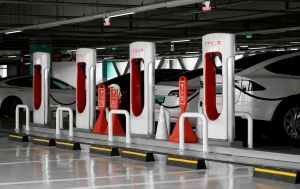


CCS EV Charging: A Comprehensive Overview Types of CCS Chargers
Introduction
As electric vehicle (EV) adoption accelerates, reliable and fast charging infrastructure is becoming essential. Among the available options, the Combined Charging System (CCS) has emerged as one of the most versatile and widely used rapid charging standards. Offering both high-speed DC fast charging and AC charging flexibility, CCS provides a robust solution for China ev charger owners who need efficient charging on the go.
What is CCS?
The Combined Charging System (CCS) is a fast-charging standard designed to meet the needs of EV owners who require faster charging times than traditional methods. Built upon the Type 2 EV connector used for AC charging in Europe and parts of North America, CCS adds two high-voltage DC power lines, enabling faster charging than conventional connectors. This combination of AC and DC charging in a single system makes CCS highly adaptable and globally accepted.
Types of CCS Chargers
There are two main types of CCS chargers, each suited to different markets:
CCS Combo 1 (CCS1): Primarily used in North America and Japan, it integrates the SAE J1772 connector for AC charging with the additional DC fast-charging pins for rapid charging.
CCS Combo 2 (CCS2): Common in Europe, this version also uses the Type 2 connector for AC charging but adds DC fast-charging capability, ensuring compatibility with a broad range of EVs across regions.
Benefits of CCS
Faster Charging: CCS chargers can deliver up to 350 kW, significantly outpacing other systems like Tesla’s Superchargers (limited to 250 kW). This allows EVs to charge faster, minimizing downtime.
Widespread Adoption: Many major automakers, including Hyundai, Kia, and Mercedes-Benz, support CCS, ensuring compatibility across various EV models and expanding the network of available charging stations.
Plug-and-Charge Functionality: Much like Tesla’s system, CCS enables a simple charging process—plug in the vehicle, and charging begins without extra steps like app-based sign-ins.
More Charging Locations: CCS stations are widely available across Europe and North America, providing broader access for EV drivers compared to proprietary networks like Tesla’s.
Challenges of CCS
Complex Connector Design: The CCS connector, with separate pins for AC and DC charging, is bulkier and can be less user-friendly than simpler systems like Tesla’s NACS.
Inconsistent User Experience: The experience with CCS chargers can vary depending on the station’s maintenance and compatibility with certain vehicles, potentially causing frustration for users.
Slower AC Charging: CCS excels at DC fast charging but is slower for AC charging compared to dedicated AC solutions like Tesla’s destination chargers.
Infrastructure Development: Although CCS stations are growing in number, some areas still lack sufficient infrastructure, limiting access for certain EV owners.
Conclusion
CCS is a vital component in the global transition to electric vehicles, offering fast charging speeds, broad compatibility, and a growing infrastructure network. As more automakers and regions adopt CCS, the charging experience will improve, making EV ownership more convenient and accessible. Despite some challenges, the future of CCS looks promising, with continued growth expected in both the adoption of EVs and the expansion of charging infrastructure.
